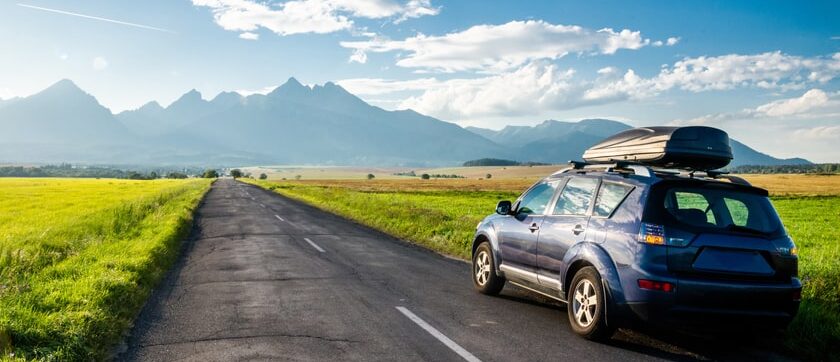A roof rack can affect your car’s performance – however, the extent of how much depends on the quality of your roof rack. This highlights the importance of investing in a well-engineered product that reduces the amount of drag on your vehicle.
One of the top roof rack brands in the world is Thule, a company in a class of its own with products that are aerodynamic, expertly designed. and easy to mount. A roof rack can offer a lot of utility, especially in an active and outdoorsy city like Calgary where drivers are constantly transporting gear such as bikes, kayaks, snowboards, skis, and camping equipment. The question is – how does a roof rack affect your car’s performance and is there a way to avoid this issue?
This article answers some of the most common questions we get about roof racks at Calgary Hitch Shop.
Does a roof rack lower my gas mileage?
In short, yes, roof racks do affect gas mileage. Any accessory attached to your car can compromise its aerodynamics which, by definition, is the motion of air when interacting with a solid object. The more aerodynamic your car is, the less effort your engine needs to keep your vehicle moving.
On the other hand, when your car’s aerodynamics is compromised, the higher the drag is on your vehicle. With that extra drag, you’ll notice a slight decrease in your fuel mileage. Poorly designed roof racks can lower your gas mileage by up to 25%.
The difference with Thule roof racks
Thule roof racks are engineered using high-quality materials and innovative designs that support a considerable amount of weight while using minimal contact points. Moreover, Thule roof racks are very aerodynamic and can withstand high speeds and wind resistance.
This intelligent design reduces the amount of drag on your vehicle to achieve the best gas mileage you can get with a roof rack attached to your car. As a result, the aerodynamics of your vehicle become more ‘slippery’ when compared to other roof racks lacking these superior design features. The result is a more efficient gas mileage when compared to other roof racks that aren’t designed with aerodynamics in mind.
The difference with Thule roof boxes
Like roof racks, Thule roof boxes are also optimized for aerodynamics. AeroNose technology, like the one featured on Thule’s Hyper Rack, is shaped in a way that reduces air drag and allows you to stay safe at higher speeds.
When you’re not using your roof box, Thule’s smart Power-Click quick-mount system easily lets you take the box off and install it back with a simple click into position. A built-in locking mechanism provides added security for your belongings.
Generally speaking, a Thule roof box offers ample room to travel with about 2 or 3 people in your car at a time. And because it’s designed and produced using the same materials as Thule roof racks, it offers similar gas mileage benefits as well.
Key takeaways
At the end of the day, poor gas mileage due to the installation of a roof rack is typically the result of a substandard product. The issue of gas mileage can be remedied once a high quality roof rack (such as the Thule roof rack) is installed. A poorly designed roof rack not only significantly decreases your gas mileage, but it can be dangerous at high speeds on the highway. Always refer to the owner’s manual to stay within the recommended speed limit for your safety.
The good news is, advances in technology and innovative designs have greatly improved the function and aesthetics of roof racks and cargo boxes. They are now more aerodynamic, easy to install, and easy to use than ever.
If you’d like to learn more about our Thule roof racks, or have any general questions, contact us today for additional information.
Frequently Asked Questions:
Why should you remove a roof rack when not in use?
Even though roof racks are composed of light materials and are designed to sit on car rooftops, they still add weight to your vehicle. This will affect the handling of your car, fuel consumption, and speed limit. We recommend removing your roof rack when not in use.
Can you go through a carwash with a roof rack on?
The short answer is: it depends.
Generally speaking, you won’t have any problem at all driving through a carwash with the majority of roof racks. However, there are certain types of roof racks with specific features that may not be ideal for car washes. More often than not, you should be just fine. Just be sure to ask questions and do some research prior to going through your carwash while your vehicle is equipped with a roof rack.
How tight should a roof rack be?
Your roof rack doesn’t need to be inordinately tight. You just want to get it to the point where there is no movement with the equipment. Once you’ve reached that level of firmness in the installation process, you should be good to go. Over tightening can lead to bending or damaging the product, which obviously you want to avoid.


